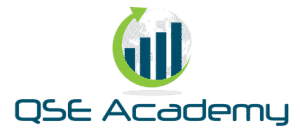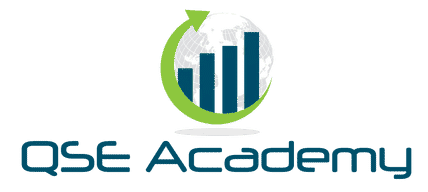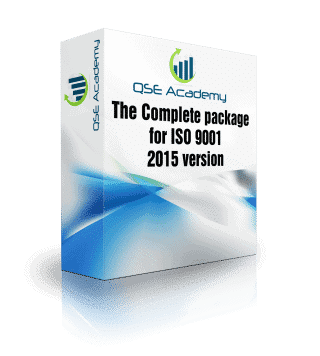ISO 9001 for Aviation [Downolad]
2025-06-23 12:15ISO 9001 for Aviation [Downolad]

![ISO 9001 for Aviation [Downolad]](https://www.qse-academy.com/wp-content/uploads/2019/10/1570800023-28599047-162x75-stripelogo2-1.png)
ISO 9001 for Aviation Package
![ISO 9001 for Aviation [Downolad]](https://www.qse-academy.com/wp-content/uploads/2019/10/1570800023-22846016-21x21-check-mark-3-xxl-1.png)
![ISO 9001 for Aviation [Downolad]](https://www.qse-academy.com/wp-content/uploads/2019/10/1570800023-22846016-21x21-check-mark-3-xxl-1.png)
![ISO 9001 for Aviation [Downolad]](https://www.qse-academy.com/wp-content/uploads/2019/10/1570800023-22846016-21x21-check-mark-3-xxl-1.png)
Limited offer: 50 % OFF
Price : 1200 $
instead of 2400 $
Operating in the aviation industry? Ensure safety, efficiency, and regulatory compliance with ISO 9001 certification. Our ISO 9001 package provides all the documents needed for quick certification.
Demonstrate your commitment to quality management and continuous improvement. Get started today with ISO 9001 for aviation and elevate your operational standards!
![ISO 9001 for Aviation [Downolad]](https://www.qse-academy.com/wp-content/uploads/2019/10/Need-Expert-Icon.png)
Why start with a blank page. Start your Project TODAY, and save up to 80% on your time and money.
![ISO 9001 for Aviation [Downolad]](https://www.qse-academy.com/wp-content/uploads/2019/10/Invite-Me-Icon.png)
This package comes with 1 hour Live 1-to-1 Online Session with ISO consultant, document reviews, continual email support for 12 months and regular update service.
![ISO 9001 for Aviation [Downolad]](https://www.qse-academy.com/wp-content/uploads/2019/10/dollar-sign-PNG15.png)
Cost-Effective Implementation: Much cheaper than an on-site consultant, and requires much less time than doing it from scratch
Who is this ISO 9001 Kit for?
To make ISO 9001 implementation seamless for aviation companies, this documentation kit is designed to address the specific needs of different aircraft manufacturers, service providers, and aviation-related businesses.
Each aviation company has unique safety protocols, regulatory compliance requirements, and quality management needs, which is why this kit includes tailored documentation to ensure compliance with ISO 9001 while optimizing operational efficiency, risk management, and passenger safety.
Who is this ISO 9001 Kit for?
This kit is structured to support various types of aviation businesses, ensuring they can integrate ISO 9001 standards into their daily operations:
| Type of Aviation Business | Core Services | ISO 9001 Considerations |
|---|---|---|
| Airline Companies | Passenger transportation, cargo logistics, flight operations | Standardized safety procedures, maintenance tracking, and customer service quality control. |
| Aircraft Manufacturers | Design, production, and assembly of commercial and private aircraft | Precision engineering, supply chain management, and defect prevention measures. |
| Aviation Maintenance & MRO Companies | Aircraft inspections, repairs, and component replacement | Compliance with maintenance regulations, service documentation, and quality assurance processes. |
| Aircraft Component Suppliers | Manufacturing and supplying aircraft parts and avionics | Supplier quality control, traceability of components, and adherence to aviation safety standards. |
| Flight Training & Aviation Schools | Pilot training, flight simulations, safety instruction | Standardized training programs, instructor qualification tracking, and curriculum compliance. |
| Air Traffic Control & Navigation Services | Flight coordination, radar monitoring, airport management | Real-time communication protocols, risk management, and regulatory compliance. |
| Private & Business Jet Operators | Charter flights, VIP travel, aircraft leasing | Personalized service procedures, flight safety measures, and operational efficiency tracking. |
| Airport Ground Handling Services | Baggage handling, aircraft fueling, passenger assistance | Service standardization, equipment maintenance, and customer service tracking. |
| Helicopter Service Providers | Emergency response, aerial surveillance, tourism flights | Flight safety protocols, maintenance schedules, and risk mitigation measures. |
| Drone & UAV Companies | Unmanned aerial vehicle (UAV) manufacturing, drone services | Flight performance testing, regulatory compliance, and quality control in production. |
Documents included:
![ISO 9001 for Aviation [Downolad]](https://www.qse-academy.com/wp-content/uploads/2019/10/1570800015-46705595-59x56x59x59x0x1-Webp.net-resizeimage.png)
ISO 9001 Quality Manual
- ISO 9001:2015 Quality Manual
- Scope of the QMS
- Quality Policy & Objectives
- Organizational Structure & Responsibilities
- Context of the Organization & Interested Parties
- Process Approach & Risk-Based Thinking
- Process Interaction & Flowcharts
- Performance Evaluation & Continuous Improvement Plan
![ISO 9001 for Aviation [Downolad]](https://www.qse-academy.com/wp-content/uploads/2019/10/1570800015-46705595-59x56x59x59x0x1-Webp.net-resizeimage.png)
Context, Planning & Leadership
- Scope of the QMS Procedure
- Context of the Organization & Interested Parties Procedure
- Leadership & Commitment Procedure
- Quality Policy & Objectives Deployment Procedure
- Risk & Opportunity Management Procedure
- Strategic Planning & Business Continuity Procedure
![ISO 9001 for Aviation [Downolad]](https://www.qse-academy.com/wp-content/uploads/2019/10/1570800015-46705595-59x56x59x59x0x1-Webp.net-resizeimage.png)
Aviation Operations & Safety
- Flight Operations & Air Traffic Control Coordination Procedure
- Aircraft Maintenance & Inspection Procedure
- Aviation Fuel Handling & Quality Control Procedure
- Passenger & Cargo Handling Procedure
- Aircraft Cleaning & Cabin Safety Compliance Procedure
- Non-Conforming Product & Service Handling Procedure
- Emergency Response & Crisis Management Procedure
- Regulatory Compliance & Airworthiness Certification Procedure
- Supplier Qualification & Material Procurement Procedure
- Flight Crew & Ground Staff Training Procedure
- Incident Reporting & Safety Investigation Procedure
- Security & Access Control at Airports & Hangars Procedure
- Aircraft Maintenance, Repair & Overhaul (MRO) Procedure
- Parts & Component Traceability & Certification Procedure
- Service Bulletin & Airworthiness Directive Compliance Procedure
![ISO 9001 for Aviation [Downolad]](https://www.qse-academy.com/wp-content/uploads/2019/10/1570800015-46705595-59x56x59x59x0x1-Webp.net-resizeimage.png)
Resource & Safety Management
- Human Resource & Competency Management Procedure
- Employee Training & Qualification Procedure
- Personal Protective Equipment (PPE) Compliance Procedure
- Warehouse & Inventory Management Procedure
- IT System Security & Data Protection Procedure
- Workplace Safety & Hazard Prevention Procedure
- Environmental Compliance & Waste Management Procedure
- Business Continuity & Emergency Response Plan Procedure
![ISO 9001 for Aviation [Downolad]](https://www.qse-academy.com/wp-content/uploads/2019/10/1570800015-46705595-59x56x59x59x0x1-Webp.net-resizeimage.png)
Performance Measurement
- Internal Audit Procedure
- Management Review Procedure
- Corrective Action Procedure
- Continuous Improvement & Lean Aviation Process Procedure
- Root Cause Analysis & Problem-Solving Procedure
- Key Performance Indicator (KPI) Monitoring Procedure
- Customer Satisfaction & Feedback Analysis Procedure
![ISO 9001 for Aviation [Downolad]](https://www.qse-academy.com/wp-content/uploads/2019/10/1570800015-46705595-59x56x59x59x0x1-Webp.net-resizeimage.png)
Documentation & Compliance
- Control of Documented Information Procedure (Document & Record Control)
- Regulatory & Legal Compliance Procedure
- Confidentiality & Intellectual Property Protection Procedure
- Aircraft & Flight Operations Log Management Procedure
![ISO 9001 for Aviation [Downolad]](https://www.qse-academy.com/wp-content/uploads/2019/10/1570800015-46705595-59x56x59x59x0x1-Webp.net-resizeimage.png)
Work Instructions & Checklists
- Aircraft Maintenance & Inspection Checklist
- Flight Operations & Pre-Flight Safety Checklist
- Passenger & Cargo Loading & Safety Checklist
- Aviation Fuel Handling & Quality Control Checklist
- Emergency Response & Crisis Management Checklist
- Aircraft Security & Access Control Compliance Checklist
- Workstation & Hangar Safety Inspection Checklist
- Supplier Evaluation & Certification Checklist
- IT System Security & Data Protection Checklist
- Business Continuity & Risk Assessment Checklist
![ISO 9001 for Aviation [Downolad]](https://www.qse-academy.com/wp-content/uploads/2019/10/1570800015-46705595-59x56x59x59x0x1-Webp.net-resizeimage.png)
Industry-Specific Records
- Aircraft Maintenance & Inspection Log
- Flight Operations Checklist & Logbook
- Passenger & Cargo Handling Report
- Aviation Fuel Quality Control Log
- Non-Conformance & Incident Report Form
- Emergency Response & Crisis Management Report
- Supplier Evaluation & Audit Form
- Ground Crew & Flight Crew Training Log
- Aircraft Cleaning & Cabin Safety Checklist
- Security & Access Control Log
- Service Bulletin & Airworthiness Directive Compliance Log
- Personal Protective Equipment (PPE) Compliance Checklist
- Waste Management & Environmental Compliance Report
- Key Performance Indicator (KPI) Tracking Log
- Customer Satisfaction & Feedback Form
- Internal & External Audit Report Template
- Business Continuity & Disaster Recovery Plan
![ISO 9001 for Aviation [Downolad]](https://www.qse-academy.com/wp-content/uploads/2019/10/1570800015-46705595-59x56x59x59x0x1-Webp.net-resizeimage.png)
Key Business & Quality Processes
- Aircraft Maintenance, Repair & Overhaul (MRO) Process
- Flight Operations & Air Traffic Control Coordination Process
- Passenger & Cargo Handling & Safety Process
- Supplier Qualification & Procurement Process
- Aviation Security & Access Control Process
- Regulatory Compliance & Certification Process
- Emergency Response & Crisis Management Process
- Employee Training & Competency Management Process
- Performance Monitoring & Continuous Improvement Process
![ISO 9001 for Aviation [Downolad]](https://www.qse-academy.com/wp-content/uploads/2019/10/1570800015-46705595-59x56x59x59x0x1-Webp.net-resizeimage.png)
Standard Operating Procedures
- SOP for Aircraft Maintenance & Inspection
- SOP for Flight Operations & Pre-Flight Checklist
- SOP for Passenger & Cargo Handling Safety
- SOP for Aviation Fuel Quality Control & Storage
- SOP for Handling Non-Conforming Aircraft Parts & Materials
- SOP for Airport Security & Access Control Compliance
- SOP for Emergency Response & Crisis Management in Aviation
- SOP for IT Security & Data Protection in Aviation Industry
- SOP for Aircraft Cleaning & Cabin Safety Compliance
- SOP for Workplace Safety & PPE Usage in Aviation Maintenance
- SOP for Supplier Evaluation & Material Certification
- SOP for Business Continuity & Disaster Recovery Plan
- SOP for Handling Airworthiness Directives & Service Bulletins
The Complete Package for ISO 9001 : 2015 version for Aviation
In the aviation industry, consistently maintaining the highest standards of safety, quality, and reliability isn’t just beneficial—it’s essential. Achieving ISO 9001 certification clearly demonstrates your aviation company’s commitment to rigorous quality management, continuous improvement, and operational excellence.
The ISO 9001 Package for Aviation Companies provides all essential documentation your organization needs to successfully achieve ISO 9001 certification. With this certification, you’ll confidently demonstrate to clients, partners, and regulatory bodies your dedication to safety, reliability, and exceptional service quality, placing your aviation company ahead in a competitive industry.
✅ Audit-Ready, Expert-Crafted Documentation – Pre-filled ISO 9001 templates specifically designed for aviation companies, ensuring seamless compliance with certification requirements.
✅ Step-by-Step Audit Checklist – A structured guide to simplify the implementation process and fully prepare your company for certification audits.
✅ Implementation Roadmap – A practical and clear action plan designed to streamline your ISO 9001 certification journey, removing uncertainty and guesswork.
✅ Pre-Filled Examples & Records – Aviation-specific document samples and realistic examples, significantly reducing preparation time and clearly aligning with auditor expectations.
✅ Cost-Saving Alternative to Consultants – Obtain professional-quality documentation and expert-level guidance without costly consulting fees (typically exceeding $8,000).
✅ Live Consultation & 12 Months of Support – Direct access to ISO 9001 specialists with aviation industry expertise, providing personalized assistance and ongoing support throughout your certification process.
✅ Formatted for Certification Success – Professionally structured documents, revision tracking, and compliance checklists specifically tailored to help aviation companies efficiently pass audits.
Start your Project TODAY, and save up to 80% on your time and money.
ISO 9001 Documentation Requirements for Aviation
Implementing a Quality Management System (QMS) in the aviation industry requires structured and comprehensive documentation to ensure compliance with ISO 9001:2015. Proper documentation is critical for maintaining safety, regulatory compliance, operational efficiency, and customer satisfaction in aviation manufacturing, maintenance, and service operations.
Aviation companies seeking ISO 9001 certification must establish a documented QMS that includes policies, procedures, and records demonstrating adherence to the standard. This documentation should be clear, concise, and tailored to aviation operations, ensuring that all employees follow quality procedures effectively.
Why ISO 9001 Documentation is Important for Aviation Companies
- Ensures consistent quality in aircraft manufacturing, maintenance, and aviation services.
- Supports compliance with aviation industry regulations such as AS9100, FAA, EASA, ICAO, and IATA standards.
- Enhances safety management systems (SMS) and risk mitigation strategies.
- Strengthens traceability of aircraft components, maintenance records, and service logs.
- Reduces operational risks, equipment failures, and safety incidents.
- Improves supplier management, procurement processes, and regulatory audits.
- Provides evidence of compliance for ISO 9001 audits, aviation authority inspections, and industry certifications.
Essential ISO 9001 Documents for Aviation Companies
Quality Manual
Although ISO 9001:2015 no longer mandates a Quality Manual, many aviation companies maintain one as a raeference document summarizing their QMS framework, objectives, and scope. This document serves as a valuable resource for employees, auditors, and regulatory bodies.
Quality Objectives
Aviation companies must document measurable quality objectives, such as:
- Enhancing aircraft safety and maintenance reliability (e.g., achieving a 99.9% compliance rate in safety checks).
- Reducing equipment failure and downtime (e.g., reducing maintenance delays by 15%).
- Supplier quality performance (e.g., ensuring 98% on-time and defect-free deliveries of aviation components).
- Improving regulatory audit success rate (e.g., achieving zero non-conformities in aviation authority inspections).
These objectives should be monitored, analyzed, and reviewed periodically to drive continual improvement.
Quality Policy
A statement reflecting the company’s commitment to aviation safety, product reliability, regulatory compliance, and continuous improvement. It must align with ISO 9001:2015, section 5.2 and be communicated across all levels of the organization.
Standard Operating Procedures (SOPs)
SOPs ensure consistent safety and quality in aviation operations. These may include:
- Aircraft component manufacturing and quality control procedures
- Aircraft maintenance, repair, and overhaul (MRO) processes
- Pre-flight, post-flight, and line maintenance inspections
- Handling of non-conforming aviation parts and corrective actions
- Airworthiness and regulatory compliance checks
- Supplier and subcontractor quality management
- Risk management, incident reporting, and safety protocols
- Aviation personnel training and certification requirements
Work Instructions & Forms
Aviation companies may develop standardized forms and checklists to facilitate documentation, such as:
- Aircraft maintenance logs
- Aviation parts inspection reports
- Pilot and crew safety checklists
- Regulatory compliance and certification records
- Equipment calibration and servicing reports
- Customer service and complaint resolution logs
- Incident and accident reporting forms
While ISO 9001:2015 does not require specific forms, they enhance operational efficiency and compliance with aviation safety standards.
Scope Statement
Aviation companies must define the scope of their QMS in accordance with ISO 9001:2015, section 4.3. This document should outline which aviation products, services, and operations are covered under the QMS.
Records & Evidence of Compliance
Maintaining records is essential for demonstrating compliance with ISO 9001. These records may include:
- Flight and maintenaance operation logs
- Aircraft manufacturing and component testing reports
- Supplier qualification and audit reports
- Airworthiness certifications and compliance documents
- Corrective and preventive action (CAPA) records
- Internal and external aviation audit reports
- Customer satisfaction and defect analysis reports
ISO 9001 requires retaining specific records as proof of adherence to quality management standards and continuous improvement efforts.
How Aviation Companies Can Develop Effective ISO 9001 Documentation
- Ensure Compliance with Industry-Specific Standards – ISO 9001 documentation should integrate aviation industry regulations (AS9100, FAA, EASA, IATA, ICAO, etc.).
- Use Visual Aids – Flowcharts, diagrams, and checklists can simplify complex aviation workflows.
- Train Employees Regularly – Employees should be well-versed in quality policies, SOPs, and airworthiness procedures.
- Update Documentation Periodically – Regularly review and revise QMS documentation based on audit findings, regulatory changes, and industry advancements.
Does ISO 9001 Require a Quality Manual for Aviation Companies?
Previous versions of ISO 9001 required a Quality Manual, but ISO 9001:2015 does not. However, many aviation companies still maintain one to saummarize their QMS approach and regulatory compliance framework.
Are Forms Mandatory?
No, ISO 9001:2015 does not explicitly require forms. However, aviation companies use standardized forms to ensure accurate record-keeping and regulatory compliance.
ISO 9001 Documentation Format and Content for Aviation Companies
- No specific format is required – Aviation companies can customize documentation to fit their operational needs.
- No need to cross-reference all documents – Keep documentation structured, clear, and accessible.
- No mandatory complexity – Documentation should be practical, detailed, and easy to implement.
How to Develop a Simple ISO 9001 Documentation System for Aviation Companies
- Ensure Clarity & Compliance – Documentation should be easy to understand and follow, while meeting ISO 9001 and aviation industry standards.
- Avoid Unnecessary Bureaucracy – Excessive documentation can slow down operations. Keep records concise and relevant.
- Use Templates Where Applicable – Well-structured templates help standardize documentation and improve efficiency.
- Seek Expert Guidance – Consulting ISO 9001 specialists ensures documentation aligns with ISO 9001:2015 and aviation industry requirements.
ISO 9001 documentation is essential for aviation manufacturers, maintenance providers, and service operators to ensure product safety, regulatory compliance, and operational efficiency. Whether an aviation company is seeking ISO 9001 certification or improving internal quality control, well-documented QMS processes are essential for sustaining competitiveness and meeting aviation safety requirements.
At QSE Academy, we provide expert assistance and ready-to-use ISO 9001 documentation templates designed specifically for aviation companies. Our solutions help streamline QMS implementation, enhance compliance, and drive continuous improvement.
Let us help your aviation company achieve ISO 9001 certification and build a reputation for safe, reliable, and high-quality aviation services.
Get a complete set of ISO 9001 documents, designed to meet auditor expectations and ensure full compliance. Every required document is included and structured for seamless certification approval.

Our templates come 90% completed with industry-standard content, requiring only minor customization such as company name, responsible parties, and a few unique details. We provide clear guidance and inline comments, so you know exactly what to modify and what remains optional.
![ISO 9001 for Aviation [Downolad]](https://www.qse-academy.com/wp-content/uploads/2024/06/file.png)
Every document is organized in a clear, structured sequence to ensure smooth implementation. Following the steps in order eliminates confusion and missing elements. Visual process maps and logograms help employees understand workflows, making ISO 9001 compliance simple and efficient.
All files are provided in MS Word & MS Excel, allowing full editing, branding, and customization. Easily add your company logo, corporate colors, and tailor headers & footers to match your business identity.
![ISO 9001 for Aviation [Downolad]](https://www.qse-academy.com/wp-content/uploads/2024/06/Capture-decran-2024-06-11-204434.png)
90 Days Money
Back Guarantee

If for whatever reason during the FIRST 90 days of your purchase, you are not satisfied for any reason, simply contact
Support@qse-academy.com and our support team will issue you an immediate and full refund.
THE ISO 9001 KIT 2015 version GIVES YOU
INSTANT ACCESS TO THE FOLLOWING
![ISO 9001 for Aviation [Downolad]](https://www.qse-academy.com/wp-content/uploads/2019/10/1570800015-46705595-59x56x59x59x0x1-Webp.net-resizeimage.png)
![ISO 9001 for Aviation [Downolad]](https://www.qse-academy.com/wp-content/uploads/2019/10/1570800015-46705595-59x56x59x59x0x1-Webp.net-resizeimage.png)
![ISO 9001 for Aviation [Downolad]](https://www.qse-academy.com/wp-content/uploads/2019/10/1570800015-46705595-59x56x59x59x0x1-Webp.net-resizeimage.png)
![ISO 9001 for Aviation [Downolad]](https://www.qse-academy.com/wp-content/uploads/2019/10/1570800015-46705595-59x56x59x59x0x1-Webp.net-resizeimage.png)
![ISO 9001 for Aviation [Downolad]](https://www.qse-academy.com/wp-content/uploads/2019/10/1570800015-46705595-59x56x59x59x0x1-Webp.net-resizeimage.png)
![ISO 9001 for Aviation [Downolad]](https://www.qse-academy.com/wp-content/uploads/2019/10/1570800015-46705595-59x56x59x59x0x1-Webp.net-resizeimage.png)
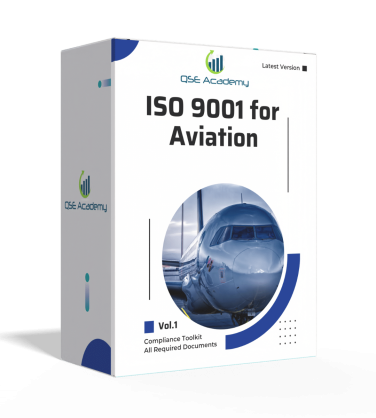
Characteristics of the complete kit ISO 9001 2015 version
✅ Price: $1,200 – A complete, high-value solution that saves you thousands compared to hiring consultants.
✅ 100% Compliant with ISO 9001:2015 – Fully aligned with the latest version of the standard, ensuring certification success.
✅ Comprehensive Documentation: 80+ pre-filled, audit-ready documents designed to streamline ISO 9001 implementation.
✅ Instant Access & Editable Formats: Fully editable MS Word & Excel files compatible with MS Office 2007, 2010, 2013, and later versions.
✅ Available in English & French – Get your ISO 9001 documentation in two languages, making implementation easier for global teams.
✅ Pre-Filled & Ready to Use: 90% of the documents are already completed—just customize a few details like your company name, key personnel, and specific business information.
✅ Audit-Ready & Certification Approved: Meets all ISO 9001 certification requirements with structured, professional documentation.
✅ Instant Digital Delivery: Get immediate access and start your ISO 9001 compliance journey right after purchase—no waiting!
✅ Designed for Small & Medium Businesses: Optimized for companies that need a fast, effective, and cost-efficient way to get certified without expensive consulting fees.
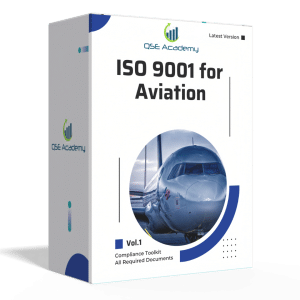

The Complete package for ISO 9001
for Aviation
The complete kit
to implement the ISO 9001: 2015 version
Limited-time offer : 50 % OFF
Price : 1200 $
instead of 2400 $
What our customers think:
![ISO 9001 for Aviation [Downolad]](https://www.qse-academy.com/wp-content/uploads/2019/10/commas.png)
“As an aviation maintenance company, quality is critical. This package gave us the structure we needed.”
![ISO 9001 for Aviation [Downolad]](https://www.qse-academy.com/wp-content/uploads/2019/10/5-stars-png-no-backg.png)
Julie F.
Technical Manager
![ISO 9001 for Aviation [Downolad]](https://www.qse-academy.com/wp-content/uploads/2019/10/commas.png)
“The documents were clear, professional, and aviation-specific. We didn’t need to start from scratch.”
![ISO 9001 for Aviation [Downolad]](https://www.qse-academy.com/wp-content/uploads/2019/10/5-stars-png-no-backg.png)
Saif H.
Quality Assurance
![ISO 9001 for Aviation [Downolad]](https://www.qse-academy.com/wp-content/uploads/2019/10/commas.png)
“It helped us align with ISO standards and improve traceability in our operations.”
![ISO 9001 for Aviation [Downolad]](https://www.qse-academy.com/wp-content/uploads/2019/10/5-stars-png-no-backg.png)
Mark A.
Safety & Quality Officer
Frequently Asked Questions
How long will it take to receive the complete package of documents after I place my order?
Upon completing your purchase, you will be redirected to the download page immediately. Additionally, a link to access your file will be sent to your email. The files are provided in a .zip format, which you will need to extract. If you encounter any issues with the download, please do not hesitate to contact us at support@qse-academy.com. Our support team is always ready to assist you.
What payment methods can I use?
We offer several payment options for your convenience. You can choose to pay using a credit card, debit card, or PayPal. Additionally, we provide a flexible layaway plan for those who prefer to pay for their purchase over time. If you have any questions about our payment options, please don’t hesitate to contact us.
Do you offer a money-back guarantee if I'm not satisfied with the service?
We offer a 30-day money-back guarantee. If you are not satisfied with our service for any reason, you can cancel within the first 30 days and receive a full refund, no questions asked.
Is there ongoing support or assistance available after my purchase?
Yes! At QSE Academy, our ISO experts provide continued support by answering your queries via email. You can expect a detailed response within 24 to 48 hours to help you move forward confidently.
Are updates to the documentation package included after purchase?
Absolutely. To ensure your documentation remains reliable and compliant, we update our packages every 6 months. Existing customers receive these minor updates at no extra charge. However, when there’s a major revision of the ISO standard itself, you’ll need to purchase an updated kit to align with the new standard.
Will I receive a valid invoice for my business expenses after completing the purchase?
Yes. After completing your purchase, you’ll immediately receive a valid invoice suitable for business and tax purposes. If you require any specific adjustments or details added to your invoice, please reach out to our support team.
Can I customize these documents for my company's specific needs?
Yes, the documents are fully customizable! You can easily edit, modify, and add your company’s logo to tailor them specifically for your organization. Additionally, if you’d prefer assistance, we offer a personalized “Done-For-You” customization service to deliver audit-ready documents tailored exactly to your organization’s requirements.
How quickly can I implement this ISO standard using your documentation?
Implementation time varies depending on your company’s engagement, resources, and experience. Typically, we’ve observed businesses successfully achieve compliance and certification within 3 to 6 months using our clear, structured documentation packages.
Do these documents guarantee successful certification?
While our documentation packages significantly simplify the certification process, the ultimate success of ISO certification depends on effective implementation. For organizations seeking further assurance, we also provide comprehensive support services, including guided implementation and internal audits, to help you confidently pass your certification audit.
Do you offer hands-on assistance if I need extra help during implementation?
Definitely! If you prefer a complete, hands-off solution, we offer a premium “Done-For-You” implementation service. Our ISO experts handle the full preparation, providing you with audit-ready documentation and detailed implementation support. You simply adopt the customized materials, follow the tailored guidelines, and confidently pass your audit.
![ISO 9001 for Aviation [Downolad]](https://www.qse-academy.com/wp-content/uploads/2019/10/1570800026-46705630-168x170x170x170x1x0-Webp.net-resizeimage.png)
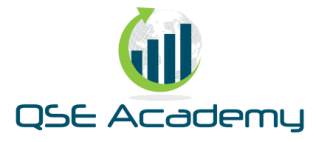
![ISO 9001 for Aviation [Downolad]](https://www.qse-academy.com/wp-content/uploads/2019/10/iso140012015.png)
![ISO 9001 for Aviation [Downolad]](https://www.qse-academy.com/wp-content/uploads/2019/10/ISO-17025-2017-versi.png)
![ISO 9001 for Aviation [Downolad]](https://www.qse-academy.com/wp-content/uploads/2019/10/iso220002018.png)
